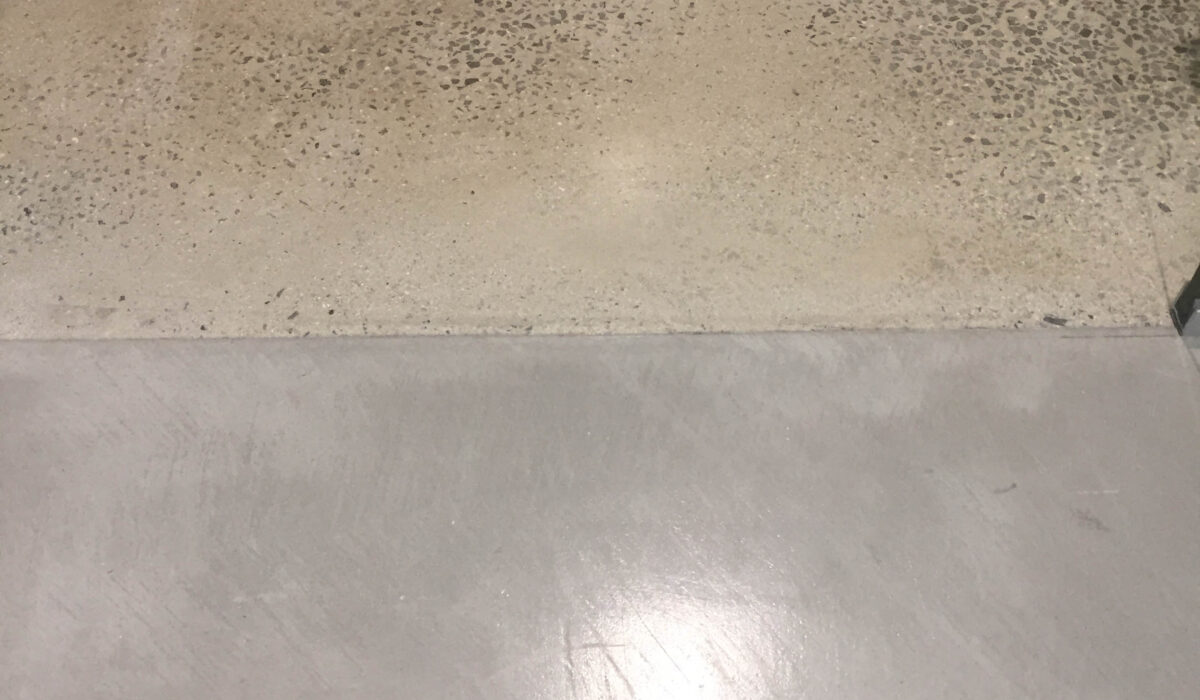- By SeamlessSurfaces
- Microtopping, Polished Concrete
- 0 Comment
Microtopping Vs Polished Concrete, A Comphensive guide.
When it comes to flooring options, microtopping and polished concrete floors are two popular choices. Both options offer unique benefits and can enhance the aesthetics and functionality of any space. In this article, we will provide a detailed comparison of microtopping floors and polished concrete floors to help you determine which flooring option is the best fit for your needs.
What is Microtopping Flooring? Microtopping is a thin layer of cement that can be applied to any existing surface, including concrete, wood, and tiles. It can be used for both residential and commercial spaces, and is popular among interior designers and architects due to its versatility and customization options.
How Microtopping Floors are Installed? Microtopping flooring is installed using a trowel or a spray gun. The installer will apply the microtopping material to the surface, and then smooth it out to create a uniform layer. Once the microtopping has been applied, it will be allowed to dry, and then sealed to protect it from wear and tear.
Types of Microtopping Finishes There are various types of microtopping finishes, including matte, glossy, and textured. Matte finishes are ideal for spaces that require a natural and subtle look, while glossy finishes are suitable for spaces that require a more modern and sleek look. Textured finishes can be used to add depth and character to the flooring.
Benefits of Microtopping Floors
- Versatile and customizable
- Can be used on any surface
- Resistant to stains, abrasions, and chemicals
- Easy to clean and maintain
- Suitable for high-traffic areas
- Can be used indoors and outdoors
- Provides a durable and long-lasting solution
What are Polished Concrete Floors? Polished concrete floors are made by grinding and polishing the surface of concrete to create a smooth and shiny finish. Polished concrete floors are popular in commercial spaces, such as warehouses, retail stores, and showrooms.
How Polished Concrete Floors are Installed? Polished concrete floors are installed by first grinding the surface of the concrete with progressively finer diamond grinding pads. The surface is then polished to create a smooth and glossy finish. Finally, a sealant is applied to protect the surface from wear and tear.
Types of Polished Concrete Finishes Polished concrete floors can be finished to varying degrees of sheen, ranging from matte to high-gloss. Matte finishes are suitable for spaces that require a natural and subtle look, while high-gloss finishes are ideal for spaces that require a modern and elegant look.
Benefits of Polished Concrete Floors
- Durable and long-lasting
- Resistant to stains, abrasions, and chemicals
- Provides a smooth and shiny surface
- Easy to clean and maintain
- Suitable for high-traffic areas
- Can be used indoors and outdoors
- Provides a cost-effective solution
Microtopping Floors vs Polished Concrete Floors: A Comparison Appearance and Aesthetics Both microtopping and polished concrete floors offer a range of customizable options. Microtopping floors can be customized with various colors and textures, while polished concrete floors can be finished to varying degrees of sheen. However, microtopping floors offer a wider range of customization options.
Durability and Lifespan Both flooring options are durable and long-lasting, but polished concrete floors are more resistant to wear and tear than microtopping floors. Polished concrete floors can last up to 20 years or more with proper maintenance, while microtopping floors typically have a lifespan of 5-10 years.
Maintenance Both microtopping and polished concrete floors are easy to clean and maintain. However, microtopping floors may require more frequent resealing and touch-ups than polished concrete floors.


